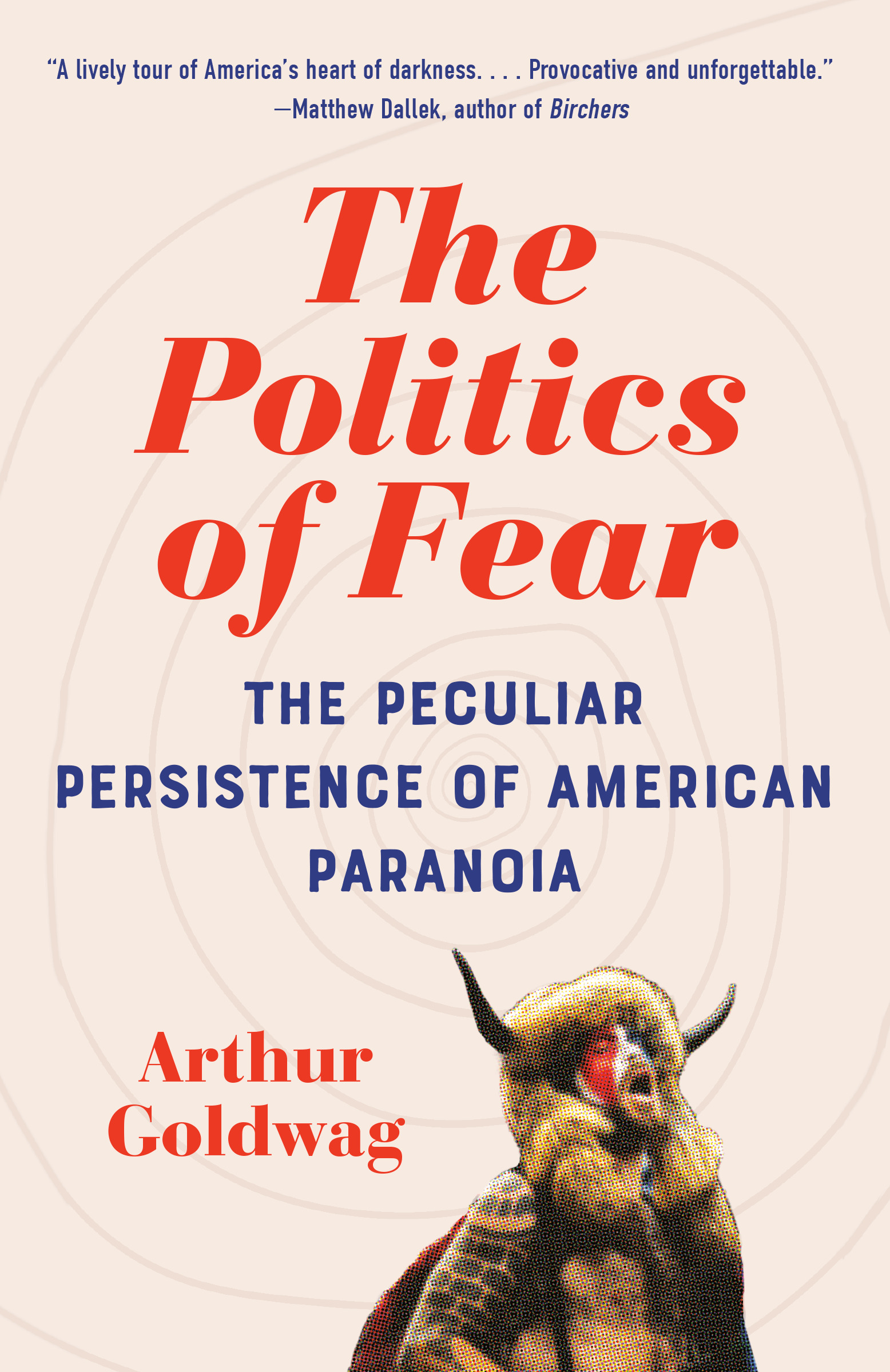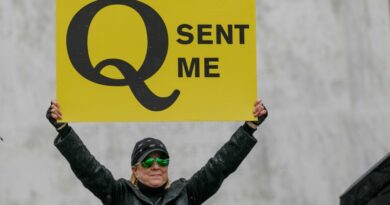What UFO Cultists Can Teach Us About Political Paranoia
As the psychologist Leon Festinger wrote in 1956, “A man with a conviction is a hard man to change. Tell him you disagree and he turns away. Show him facts or figures and he questions your sources. Appeal to logic and he fails to see your point.” Why is that? Because, as Festinger explained in depth in A Theory of Cognitive Dissonance and other books, when a deeply held conviction comes into conflict with reality, its holder experiences a “cognitive dissonance” that is so uncomfortable that he or she is driven to reduce or resolve it, either by revising the belief to bring it into consonance with reality, or, if it is too deeply rooted to change, by editing their view of reality to conform with their conviction. A smoker may convince themselves that they’re right to ignore their doctor’s advice to quit because the weight they might gain would jeopardize their health even more than smoking does. Or, they may simply avoid visiting the doctor.
Cognitive dissonance avoidance accounts for why liberals prefer to watch MSNBC and conservatives Fox News, and why we prefer to socialize with people who share our biases. More broadly, it accounts for why some of us stubbornly believe the unbelievable—and disbelieve what we cannot rationally deny.
Read More: Why Does the QAnon Conspiracy Thrive Despite All its Unfulfilled Prophecies?
Festinger designed a number of ingenious laboratory experiments to demonstrate cognitive dissonance reduction and avoidance in action. But when the Seekers, a tiny Chicago-based UFO cult, announced that the world would end on December 21, 1954, Festinger saw an opportunity to carry out a natural experiment. The Seekers, he predicted, would handle the inevitable “disconfirmation” of their prophecy in three possible ways: The least-committed would either reject the new belief system they’d adopted and return to their lives, or alter it to accommodate its disconfirmation, concluding, perhaps, that they’d misinterpreted the prophecy. Maybe they’d gotten the date wrong, they’d say, or taken literally what they should have construed metaphorically. But the most zealous apostles, the ones who had invested the most in the movement, he predicted, would more than likely take a leap into the absurd and redouble their proselytizing in an attempt to create a community of believers that was large enough to cancel out the refutation of their belief. Because, as Festinger put it, “if everyone in the whole world believed something there would be no question at all as to the validity of this belief.”
Festinger sent some of his graduate students to infiltrate the Seekers and take notes. The result was When Prophecy Fails, an ethnographic study that reads at times like the scenario for one of Christopher Guest’s deadpan mockumentaries, though its authors (Festinger co-wrote it with Henry W. Riecken and Stanley Schachter, two of his colleagues at the Laboratory for Research in Social Relations at the University of Minnesota) never stooped to outright ridicule or condescension. As they noted in its opening pages, history is replete with cases of messianic movements that survived the public failures of their prophecies, at least for a time. Montanus, a Christian of the Second century, received a revelation that Christ was about to return to the Phrygian town of Pepuza, which would become the New Jerusalem. Though nothing of the sort happened, Pepuza enjoyed a population boom in anticipation of its changed status and Montanism carried on as a heretical sect there for another 400 years.
Sabbatai Zevi, a Jewish mystic from Smyrna, prophesized that the Messiah would come to earth in 1648. When 1648 came and went, he revised the date to 1666. In 1665, he announced that he himself was the Messiah, and set out to Constantinople to depose the Sultan. Some of his followers fell away when he was arrested and imprisoned, but others reasoned that the fact that the Sultan hadn’t killed him confirmed that he was the Messiah. The Sultan, then, told Zevi to choose between martyrdom and conversion, and Zevi agreed to convert to Islam. That was a bridge too far for most, but not all, of the Sabbateans; the hardest-core of true-believers presumed Zevi’s conversion had been a part of his plan all along and followed him into apostasy.
The Seekers had none of Zevi’s mass appeal; they never numbered more than a few dozen. Their spiritual leader was Dorothy Martin (Festinger and his co-authors called her Mrs. Marian Keech in the book), a 50-something housewife who’d attended theosophy lectures; read the literature of the quasi-fascist “I AM” movement; studied Oahspe, the Faithist Bible that was channeled to the American dentist John Ballou Newbrough in 1882; and dabbled in the freshly minted religion of Scientology. At some point, she’d begun to receive communications from other planes of existence. The first messages she transcribed were from her dead father. Then, spiritual beings from the planets Clarion and Cerus made contact with her. The most important of them, Sananda, told her that he was the latest incarnation of Jesus Christ. In time, he warned her about the tribulations that would usher in the New Age.
Not only would Lake Michigan inundate Chicago, Sananda said, in his quasi-Biblical diction, but “the east of the country of the U.S.A. is that it is to break in twain.” “The great tilting of the land of the U.S. to the East will throw up mountains along the Central States,” he said. “The new mountain range shall be called the Argone Range, which will signify the ones who have been there are gone.” Worldwide, the Egyptian deserts would bloom, the lost continent of Lemuria would rise out of the Pacific, and France, England, and Russia would sink beneath the waves.

As the countdown to December 21, 1954 began, the media camped out in Martin’s neighborhood. Things quickly took a farcical turn. When one of Festinger’s researchers appeared at her house, Martin and the Seekers mistook him for a messenger from Sananda and pressed him to give them a sign. One of the members channeled a message that promised a miracle—Martin’s husband would die that same night and be resurrected. Three times, members checked on Mr. Martin in his bedroom, and three times, they found him peacefully asleep. After the third time, the messenger lamely explained that the miracle had already happened—he’d died and been resurrected when no one was watching.
When Sananda told Martin that a flying saucer would pick them up at 4 p.m. on December 17th and transport them to a place of safety, the Seekers stripped all the metal off their clothes in preparation (for reasons that were not specified, metal and flying saucers were understood to be a fatal mix). The saucer didn’t come that afternoon, and it didn’t come that night, though they waited in the bitter cold in Martin’s back yard until 3 a.m. the next morning.
Dr. Charles Laughead (Festinger and company called him Dr. Armstrong) was one of the Seekers’ most ardent members. A medical doctor and college professor, he had done missionary work in Egypt with his wife, with whom he shared a deep interest in the occult and flying saucers. In the early hours of December 21, as the Seekers stood vigil for the last time, Laughead bucked up one of Festinger’s secret observers (though it’s not unreasonable to surmise that he was shoring up his own faltering faith, as well):
p]:py-2″>I’ve given up just about everything. I’ve cut every tie: I’ve burned every bridge. I’ve turned my back on the world. I can’t afford to doubt. I have to believe. And there isn’t any other truth.… I won’t doubt even if we have to make an announcement to the press tomorrow and admit we were wrong. You’re having your period of doubt now, but hang on, boy, hang on. This is a tough time but we know that the boys upstairs are taking care of us. They’ve given us their promise.
Martin and the Seekers ultimately explained her prophecy’s failure as the proof of its success: the announcement they made to the press the next day was not that she had been wrong, but that the Seekers’ steadfastness had been rewarded with the divine decision to postpone the Day of Judgment.
True to Festinger’s predictions, while the group’s more casual members did drift back into their old lives, its core members doubled down on both their belief and their proselytizing. But only for a time; within a matter of weeks, as Festinger and his co-authors dryly put it, “an unfriendly world finally forced the small band of Lake City believers into diaspora.” Still, they concluded, “It is interesting to speculate….on what they might have made of their opportunities had they been more effective apostles…. disconfirmation might have portended the beginning, not the end.” Martin herself continued to channel otherworldly messages and write New Age books for the rest of her long life.
The need to reduce or avoid cognitive dissonance can’t account for the contents of strange beliefs, whether they are in the realm of religion, flying saucers, or politics. But it goes a long way to explain their stickiness. Reasoning with a true believer—a Stalinist who continued to believe that Russia was a beacon of freedom and fairness even after the show trials, the purges, and the Gulags became widely known; a QAnon follower in the weeks and months after Biden’s inauguration failed to bring about the cleansing storm that had been promised—can be exactly as useful as reasoning with someone who is in love with the wrong person.
There were only a few dozen Seekers, and QAnon is hardly in the political mainstream. But as our political culture grows ever more toxic and polarized, our deep need to deny and distort whatever clashes with what we choose to believe has come to play an even more vital role in our national psyche than ever before.
Adapted from: The Politics of Fear: The Peculiar Persistence of American Paranoia by Arthur Goldwag. Copyright © 2024 by Arthur Goldwag. Published by arrangement with Vintage Books, a division of Penguin Random House LLC.


